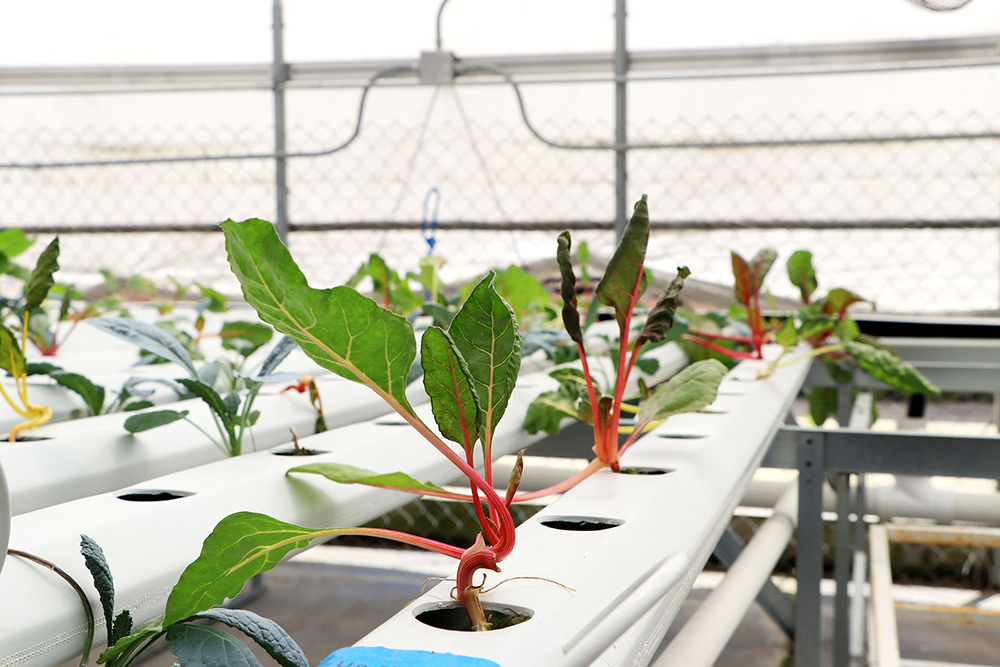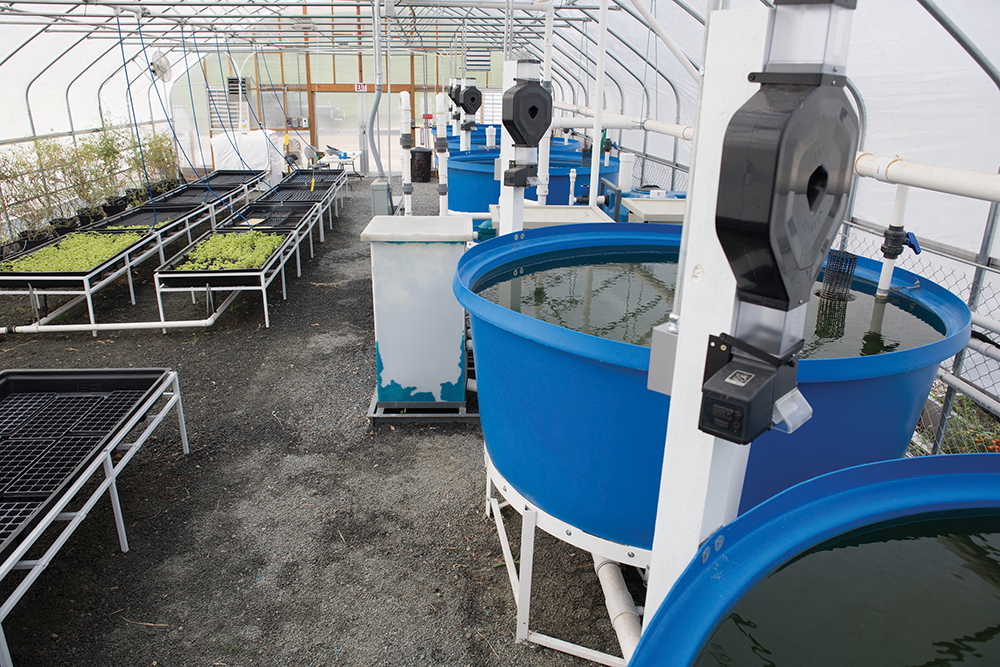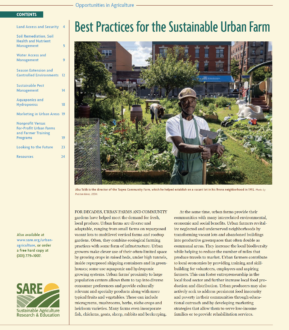
In recent years, growing vegetables with soilless media has become more common and represents a growing market opportunity for urban producers. These growing systems are increasingly popular among urban producers as a way to get around the challenges of poor soil and limited space typical of urban settings. Hydroponic systems involve producing vegetables in water enriched with nutrients instead of soil. Aquaponic systems combine hydroponic vegetable production with fish production in a mutually beneficial system. In aquaponic systems, fish food and waste provide ammonia, which is broken down into nitrates, a valuable source of nutrition for plants. In turn, plants filter waste to maintain a clean environment for fish.
Aquaponics is a clever way farmers produce both vegetables and protein on a small-scale urban farm. Also, aquaponic systems make more efficient use of available nutrients and water. As much as 80% of the nutrients required by plants can be provided through fish waste. Because water is recycled and recirculated within aquaponic systems, they use up to 90% less water than in-ground growing systems.

While there are many benefits to aquaponic systems, they can have disadvantages. To use an aquaponic system, you need to understand both vegetable and fish production. Another thing to consider is that aquaponic systems require frequent monitoring to maintain water quality and optimal nutrient levels for both fish and vegetables. Nutrient deficiencies are common in aquaponic systems but can be managed with readily available supplements. Aquaponic systems are highly customizable and varied, and they can be designed to work on both small farms and on larger operations.
The costs to start an aquaponic system may be prohibitive for some growers. The FSA offers funding for small and niche farms, including equipment for hydroponic, aquaponic and vertical growing systems. If you’re considering a hydroponic or aquaponic system, be sure to consult local expertise. Resources are widely available online. Kentucky State University published a comprehensive overview of aquaponic production, Kentucky State University Aquaponics Production Manual.
Aquaponics: Big Food Production at Small Scales
In 2013, Greg Fripp, founder of Whispering Roots Farm, used a SARE Farmer/Rancher grant (FNC13-911) to expand local, school-based aquaponics programs to demonstrate aquaponic system design and crop management. Through this grant, Fripp collaborated with students at a local Omaha, Neb., school to build a tilapia-based “flood and drain” recirculating aquaponic system. Their setup consisted of a 100-gallon fish tank, a grow bed with a clay growing medium, tubing and a low wattage pump to circulate water from the fish tank into the grow bed. With Fripp’s guidance, students grew a range of crops in this system like lettuce, eggplants, basil, strawberries, tomatoes, kale and peppers, as well as tilapia that reached marketable harvest weights after nine months. They consider their project a success, and local restaurant owners are happy with the quality and taste of their produce.
Fripp provides a detailed overview of aquaponics systems and their management in the webinar, “Small Scale Aquaponics”.
1 Lennard W. and S. Goddek. 2019. Aquaponics: The Basics. In: Goddek S., A. Joyce, B. Kotzen and G.M. Burnell (eds.). Aquaponics Food Production Systems. Springer, Cham.
